Most gardeners stick to classic rows, raised beds, or curved borders—but what if a different garden layout could save you time and energy? These unusual designs might look unconventional at first glance, but they’re rooted in real-life problem-solving. Whether you struggle with weeds, watering, or foot traffic, a smart layout can turn your space into a more manageable, low-effort retreat.
In this list, you’ll find 15 creative garden layouts that don’t just look good—they actively make maintenance easier. From spiral beds to keyhole plots, these ideas rethink how we plant, move, and care for our gardens. If you’re looking to shake things up while saving your back (and your weekends), these clever setups might just be your next favorite thing.
Spiral Herb Garden
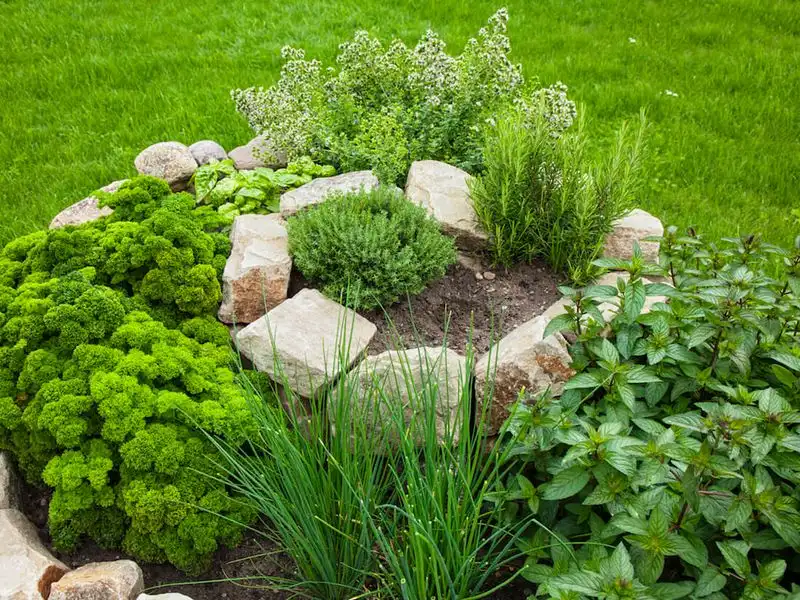
Unfurling like a verdant ribbon, a spiral herb garden is both eye-catching and practical. The spiral design maximizes space, allowing a variety of herbs to flourish within a compact area. This layout is particularly beneficial for different soil and moisture needs, as the top is drier, while the base retains more water. With easy access to every plant, maintenance becomes a breeze, and harvesting is even simpler. Ideal for small spaces, it transforms a mundane patch into a vibrant, aromatic sanctuary.
Keyhole Garden
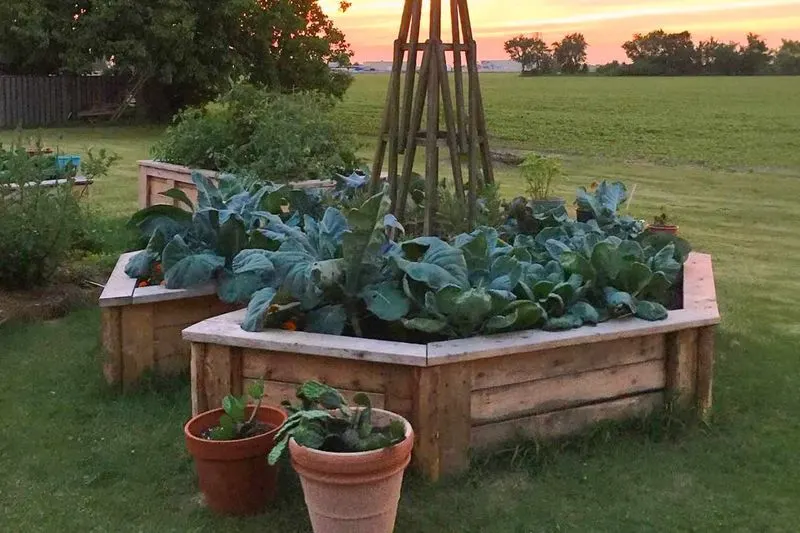
Inspired by sustainable practices, the keyhole garden is perfect for water conservation. A circular design with a central composting basket ensures nutrients are constantly recycled into the soil. This unique setup not only saves water but also enhances soil fertility. The shape provides easy access to plants from all sides, minimizing the need for excessive bending or stretching. Originally designed for arid regions, it’s a sustainable solution for eco-conscious gardeners everywhere.
Vertical Pallet Garden
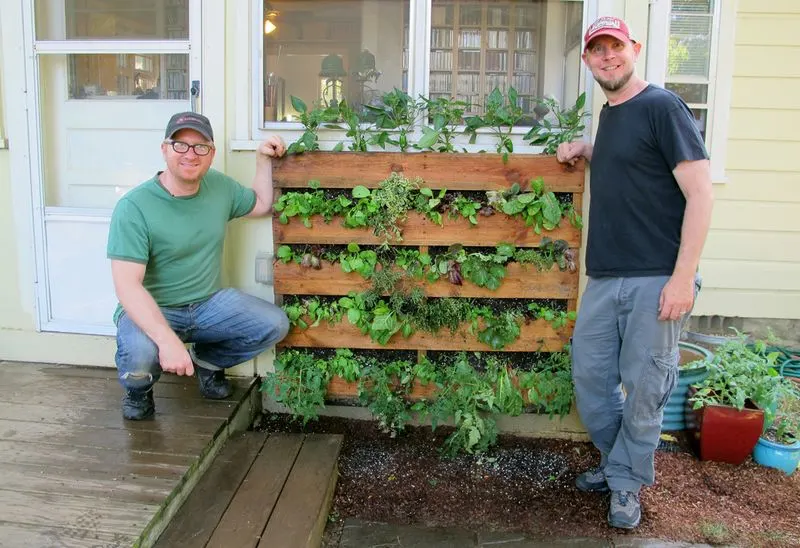
A vertical pallet garden is a clever way to utilize vertical space, especially in urban settings. By transforming wooden pallets into planters, you can grow flowers, herbs, and even vegetables vertically. This not only saves ground space but also adds a striking feature to any wall or fence. Watering is simplified with a drip irrigation system, reducing the chore of daily care. Perfect for small patios or balconies, it turns otherwise unused spaces into a flourishing garden.
Mandala Garden
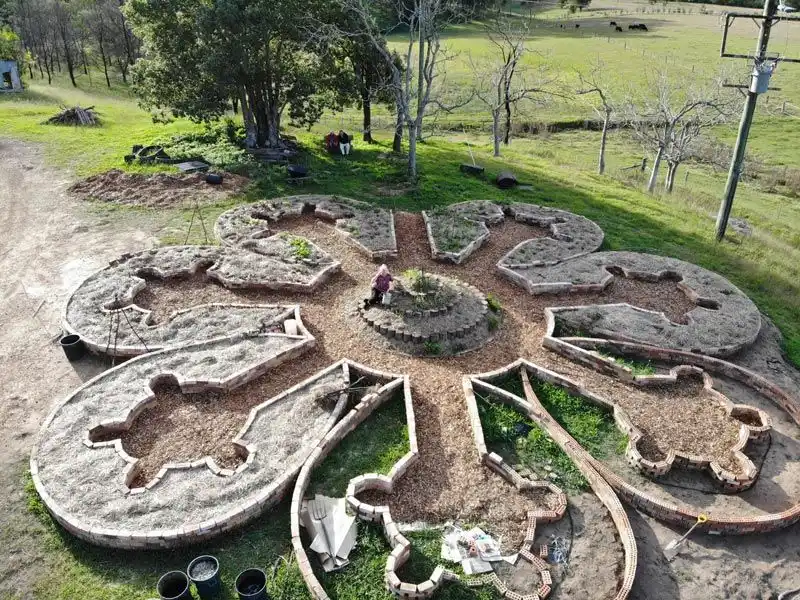
Embracing symmetry and natural patterns, the mandala garden offers a harmonious planting approach. This layout features a series of concentric circles, creating an aesthetically pleasing design. Different plants are strategically placed, considering their growth habits and sunlight needs. The paths between the beds allow easy access for maintenance, reducing the effort needed for weeding and harvesting. Originating from permaculture principles, it’s as efficient as it is beautiful.
Square Foot Garden
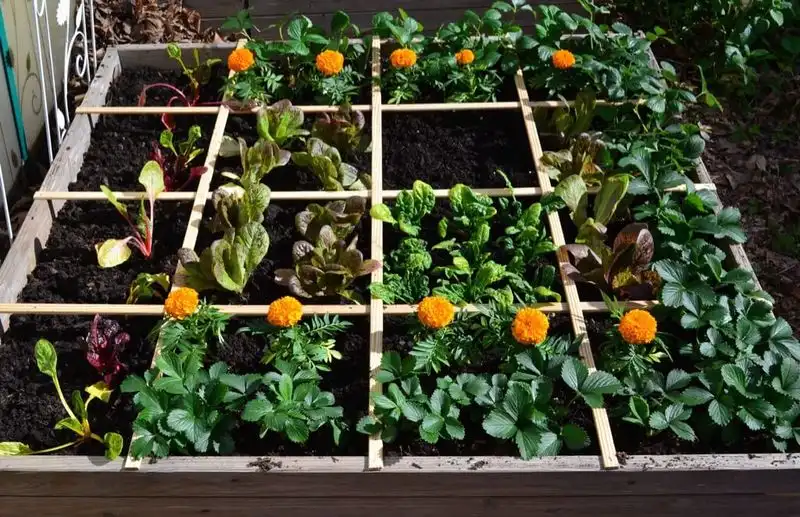
Square foot gardening is a systematic approach to maximizing yield in minimal space. Each square foot is allocated to a specific plant, ensuring organized growth and ease of maintenance. This method reduces the need for thinning, as plants are spaced optimally. It’s ideal for beginners looking to dip their toes into gardening without feeling overwhelmed. The grid keeps everything tidy, and the concentrated plantings help suppress weeds, making upkeep manageable.
Hügelkultur Beds

Hügelkultur, a German concept, utilizes mounds of decomposing wood covered with soil to create raised beds. These beds retain moisture and heat, reducing the need for watering. The decaying wood acts as a natural sponge, holding water during dry spells. Ideal for regions with poor soil quality, hügelkultur beds enrich the earth while reducing manual watering. Over time, they naturally aerate the soil, promoting healthy root development and robust plant growth.
Potager Garden

Blending beauty with functionality, the potager garden is more than just a vegetable patch. It integrates herbs, flowers, and vegetables in an ornamental design. Paths are weaved through lush beds, allowing easy access and encouraging frequent visits. The mix of plants not only looks stunning but also promotes biodiversity, attracting beneficial insects. This layout changes with the seasons, offering a dynamic and ever-evolving garden experience that is as delightful to tend as it is to behold.
Lasagna Garden

Layer upon layer, the lasagna garden builds itself into a fertile haven. By layering organic materials such as straw, leaves, and compost, this method enriches the soil without the need for tilling. Over time, these layers decompose, providing nutrients that sustain thriving plants. Ideal for those seeking a no-dig approach, it’s a labor-saving technique that results in rich, crumbly soil. Whether you grow vegetables or flowers, the lasagna method simplifies gardening, making upkeep virtually effortless.
Cottage Garden
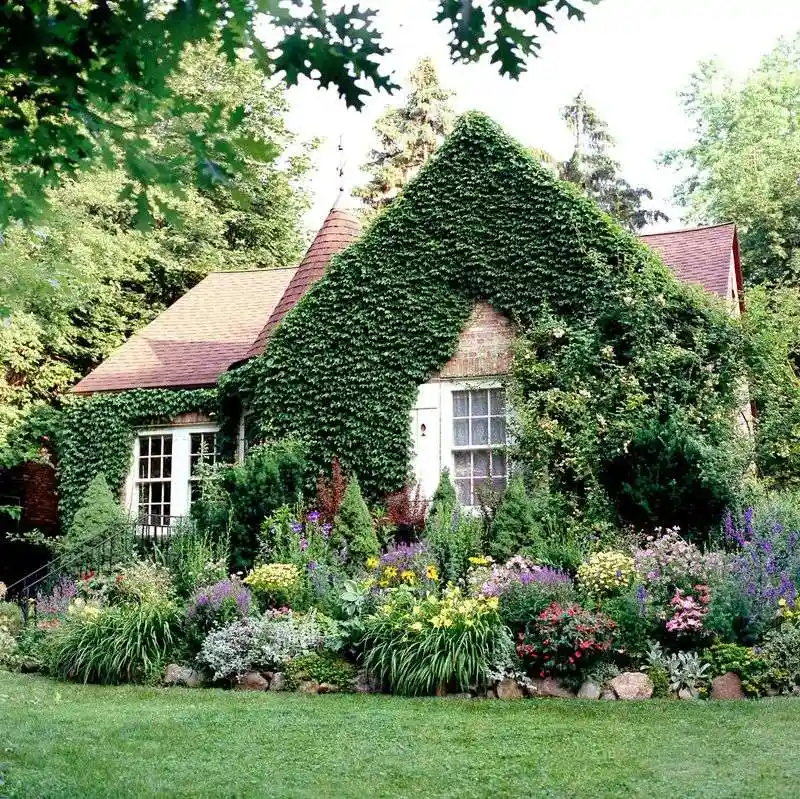
A riot of colors and textures, the cottage garden is a tapestry of perennial flowers, shrubs, and vegetables. Designed for continuous bloom, it requires minimal upkeep once established. This layout is all about informal beauty, with plants allowed to spill over paths and mingle freely. While it may appear wild, careful planning ensures a balanced ecosystem that thrives with little intervention. Perfect for those who cherish a touch of whimsy and romance in their garden.
Forest Garden
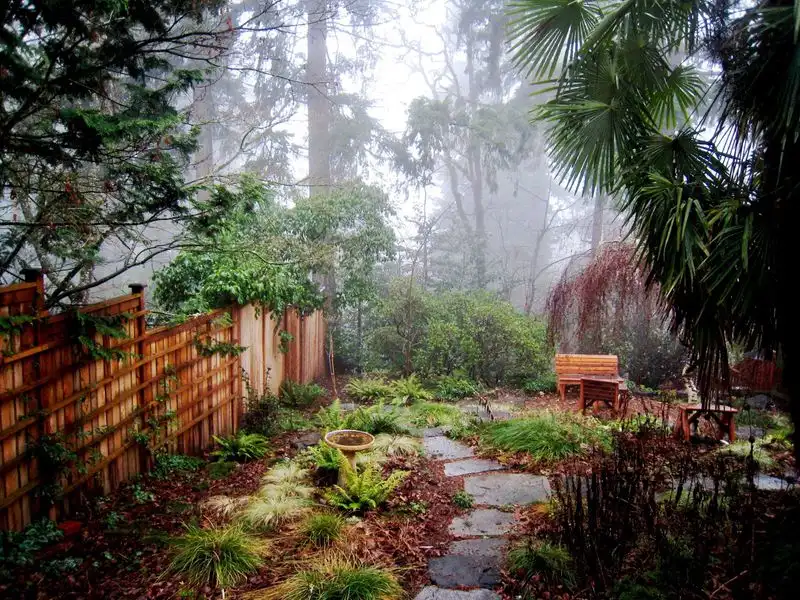
Inspired by woodland ecosystems, the forest garden is a self-sustaining haven. It incorporates layers of plants, from towering trees to ground-hugging herbs, each playing a role in the garden’s health. This biodiverse approach mimics nature, requiring minimal input once established. Paths weave through the lush greenery, offering a sense of tranquility. Ideal for those who dream of a garden that practically takes care of itself, the forest setup is both ecological and enchanting.
Sunken Garden
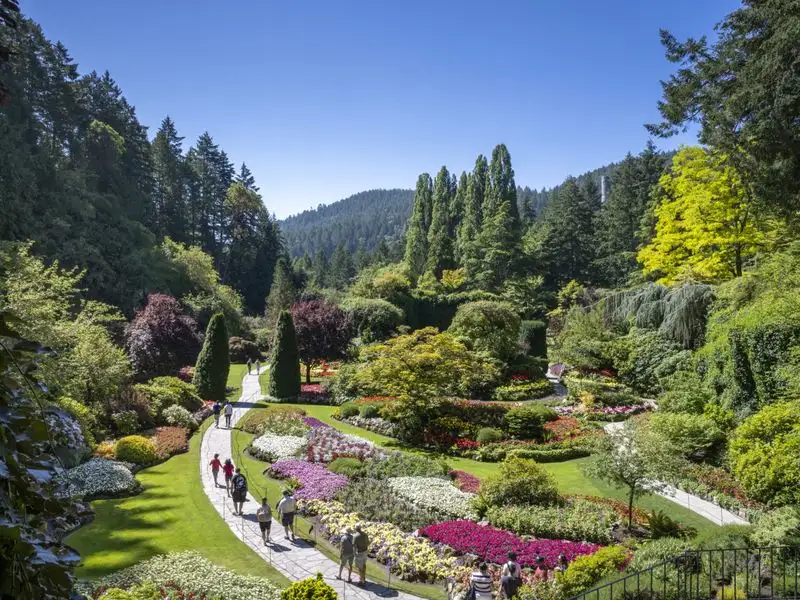
Nestled into the landscape, a sunken garden offers a unique twist on traditional gardening. Terraced beds allow for creative planting, while stone steps provide easy access. This design naturally collects rainwater, reducing the need for supplemental irrigation. The sheltered environment creates a microclimate, protecting plants from harsh weather. With the right plant choices, a sunken garden transforms into an intimate retreat, offering both beauty and functionality for gardeners.
Meadow Garden
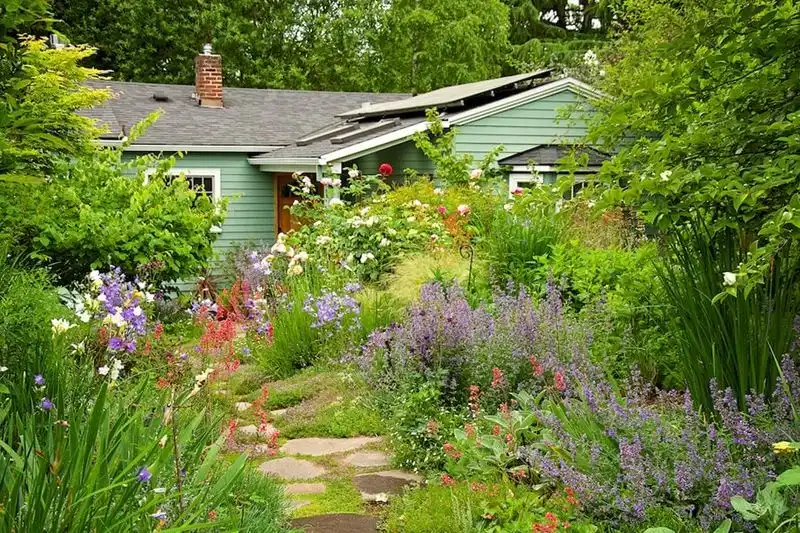
Wild and free, a meadow garden is an ode to nature’s beauty. It’s an effortless way to cultivate a vibrant landscape, full of wildflowers and native grasses. These gardens require minimal mowing and maintenance, as the plants are adapted to local conditions. Meandering paths invite exploration, creating a sense of discovery. Beyond their beauty, meadow gardens support pollinators and local wildlife, making them a sustainable choice for environmentally conscious gardeners.
Zen Garden
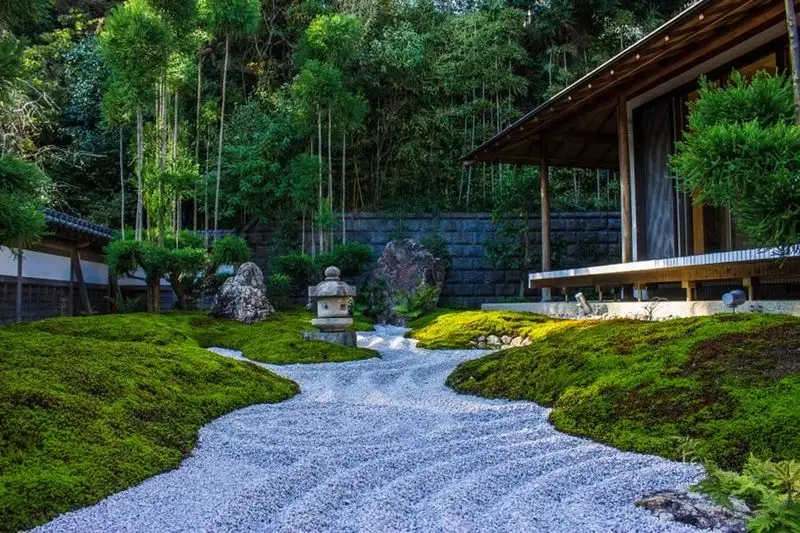
Serenity found in simplicity, the zen garden is a minimalist’s dream. With meticulously raked gravel representing water and rocks symbolizing mountains, it offers a meditative space. Plantings are sparse, often limited to bamboo or moss, reducing maintenance demands. This garden invites reflection and peace, offering a respite from the chaotic world. While it may appear stark, the careful arrangement of elements creates harmony and balance, requiring only occasional attention.
Knot Garden
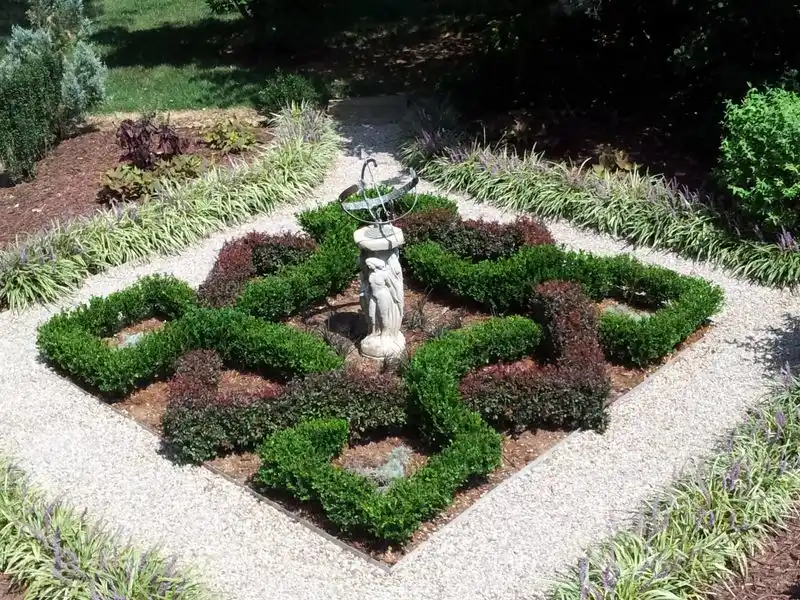
Elegance lies in precision within a knot garden. Clipped boxwood hedges create intricate patterns, with aromatic herbs adding texture and scent. This historic European design requires regular trimming but rewards with its neat appearance. The layout guides the eyes, offering visual satisfaction. Once established, these gardens need little else but a careful pruning routine. Their structured beauty captivates, bringing a touch of formal elegance to any space.
Terraced Garden
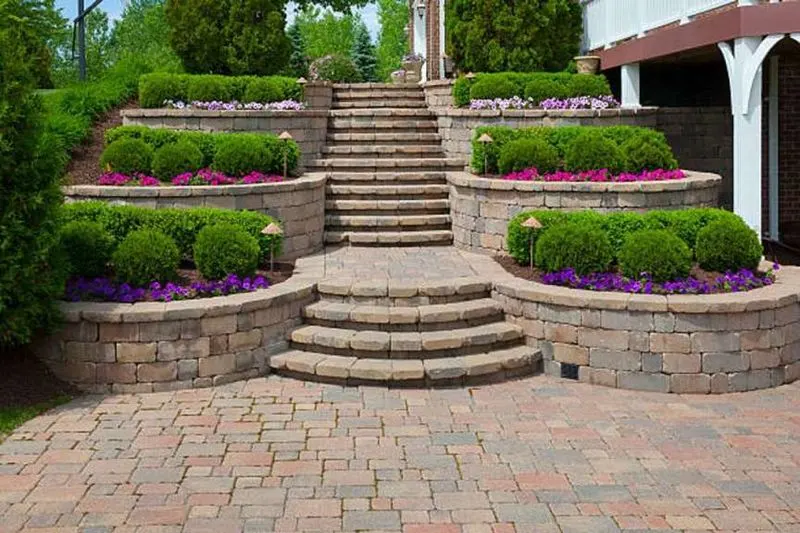
Conquering the slopes with elegance, terraced gardens transform hillsides into productive landscapes. Stone retaining walls support beds filled with vegetables and flowering plants. This design prevents soil erosion and improves drainage, making it ideal for challenging terrain. Terraces create microclimates, optimizing growing conditions. Paths meander between levels, making every plant easily accessible. Beyond practicality, they offer stunning views, turning a slope into a cascading garden paradise.

